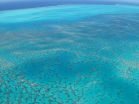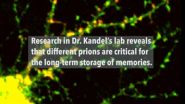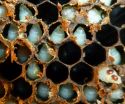Be square, seahorse; it has mechanical advantages
2015-07-02
(Press-News.org) This news release is available in Japanese.
The seahorse tail is square because this shape is better at resisting damage and at grasping than a circular tail would be, a new engineering study shows. Insights gleaned from the study could inspire new armor and advances in robotics, the authors say. While most animals with tails, including certain monkeys, lizards and rodents, have soft, cylindrical-shaped appendages, tails of seahorses are organized into square prisms surrounded by bony plates. To better understand why the seahorse tail deviates from the norm, and what mechanical advantages its curious tail shape might confer, Michael Porter and colleagues created a 3D-printed model of the tail, as well as a hypothetical cylindrical version. The researchers twisted and bent both models, and hit them with mallets, finding that the square version was more resistant to twisting, better able to return to its natural alignment. The twisting resistance of the square tail may help protect the seahorse's delicate spinal cord. The outer surfaces of the square tail also increase contact area when the tail wraps around an object, the researchers found, giving it better grasping control. Finally, the square version was also more resilient, not deforming as drastically as its round counterpart. This resilience was facilitated by gliding joints, as illustrated in a related computer animation. Scientists have been taking inspiration from nature to design new technologies, like search-and-rescue robots, for years, and this new study will add to their ability to do that, particularly as the seahorse tail, though hard, is compliant (a quality difficult to achieve in metal robots) and though light in weight is damage-resistant (a quality challenging to realize in silicone-based bots). The study also shows how engineering designs can answer biological questions. A Perspective provides additional insights.
INFORMATION:
Article #8: "Why the seahorse tail is square," by M.M. Porter at Clemson University in Clemson, SC; D. Adriaens at Ghent University in Ghent, Belgium; R.L. Hatton at Oregon State University in Corvallis, OR; M.A. Meyers; J. McKittrick at University of California, San Diego in La Jolla, CA.
ELSE PRESS RELEASES FROM THIS DATE:
2015-07-02
Mass killings and school shootings in the U.S. appear to be contagious, according to a team of scientists from Arizona State University and Northeastern Illinois University.
Study author Sherry Towers, research professor in the ASU Simon A. Levin Mathematical, Computational and Modeling Sciences Center, explained, "The hallmark of contagion is observing patterns of many events that are bunched in time, rather than occurring randomly in time."
Her team examined databases on past high-profile mass killings and school shootings in the U.S. and fit a contagion model to ...
2015-07-02
Climate change is forcing fish out of their current habitats and into cooler waters and many more species will soon be affected if climate goals are not met, say scientists.
An international team of researchers compared the future of the oceans under two climate change scenarios. In one scenario, we limit atmospheric warming to two degrees by 2100, as outlined by the Copenhagen accord. In the other, we continue with the current approach, which researchers say would cause a five-degree increase in atmospheric temperatures. They say if warming continues unchecked, fish ...
2015-07-02
A new study has discovered mysterious behaviour of a material that acts like an insulator in certain measurements, but simultaneously acts like a conductor in others. In an insulator, electrons are largely stuck in one place, while in a conductor, the electrons flow freely. The results, published today (2 July) in the journal Science, challenge current understanding of how materials behave.
Conductors, such as metals, conduct electricity, while insulators, such as rubber or glass, prevent or block the flow of electricity. But by tracing the path that electrons follow ...
2015-07-02
Researchers at Vanderbilt University and the National University of Singapore have determined the structure of a human monoclonal antibody which, in an animal model, strongly neutralizes a type of the potentially lethal dengue virus.
The finding, reported today July 2 in the journal Science, could lead to the first effective therapies and vaccines against dengue, a complex of four distinct but related mosquito-borne viruses that infect about 390 million people a year and which are a leading cause of illness and death in the tropics.
"Scientists in the antibody discovery ...
2015-07-02
NEW BRUNSWICK, N.J., - July, 2, 2015 - Johnson & Johnson (NYSE: JNJ) announced today that scientists at Beth Israel Deaconess Medical Center (BIDMC), Crucell Holland B.V, one of the Janssen Pharmaceutical Companies of Johnson & Johnson (Janssen), and several other collaborators today published results from a preclinical study of an HIV vaccine regimen used in in non-human primates. The study, published in the online edition of Science, suggests that a "heterologous prime-boost" vaccine regimen--which first primes the immune system, then boosts the immune system to increase ...
2015-07-02
Doughnuts, electric current and quantum physics - this will sound like a weird list of words to most people, but for Sebastian Huber it is a job description. ETH-professor Huber is a theoretical physicist who, for several years now, has focused his attention on so-called topological insulators, i.e., materials whose ability to conduct electric current originates in their topology.
The easiest way to understand what "topological" means in this context is to imagine how a doughnut can be turned into a coffee cup by pulling, stretching and moulding - but without cutting ...
2015-07-02
Hamilton, ON (July 2, 2015) - Two new studies led by researchers from the Farncombe Family Digestive Health Research Institute at McMaster University show that transplantation of fecal matter may be a useful tool in the fight against ulcerative colitis (UC).
Ulcerative colitis is a chronic, debilitating inflammatory bowel condition characterized by symptoms including bloody stools, diarrhea, abdominal pain, weight loss and malnutrition. It results from the development of abnormal immune responses to the normal bacteria in the digestive tract. It is difficult to treat ...
2015-07-02
NEW YORK, NY (July 2, 2015)--Research from Eric Kandel's lab at Columbia University Medical Center (CUMC) has uncovered further evidence of a system in the brain that persistently maintains memories for long periods of time. And paradoxically, it works in the same way as mechanisms that cause mad cow disease, kuru, and other degenerative brain diseases.
In four papers published in Neuron and Cell Reports, Dr. Kandel's laboratory show how prion-like proteins - similar to the prions behind mad cow disease in cattle and Creutzfeld-Jakob disease in humans - are critical ...
2015-07-02
Think you're a foodie? Adventurous eaters, known as "foodies," are often associated with indulgence and excess. However, a new Cornell Food and Brand Lab study shows just the opposite -adventurous eaters weigh less and may be healthier than their less-adventurous counterparts.
The nationwide U.S. survey of 502 women showed that those who had eaten the widest variety of uncommon foods -- including seitan, beef tongue, Kimchi, rabbit, and polenta-- also rated themselves as healthier eaters, more physically active, and more concerned with the healthfulness of their food ...
2015-07-02
An infestation of speck-sized Varroa destructor mites can wipe out an entire colony of honey bees in 2-3 years if left untreated. Pesticides help beekeepers rid their hives of these parasitic arthropods, which feed on the blood-like liquid inside of their hosts and lay their eggs on larvae, but mite populations become resistant to the chemicals over time.
While exploring plant-based alternatives to control Varroa mites, Chinese bioagricultural and Japanese cell physiological labs saw that certain tick repellents repress mites from finding their honey bee hosts. In a ...
LAST 30 PRESS RELEASES:
[Press-News.org] Be square, seahorse; it has mechanical advantages






